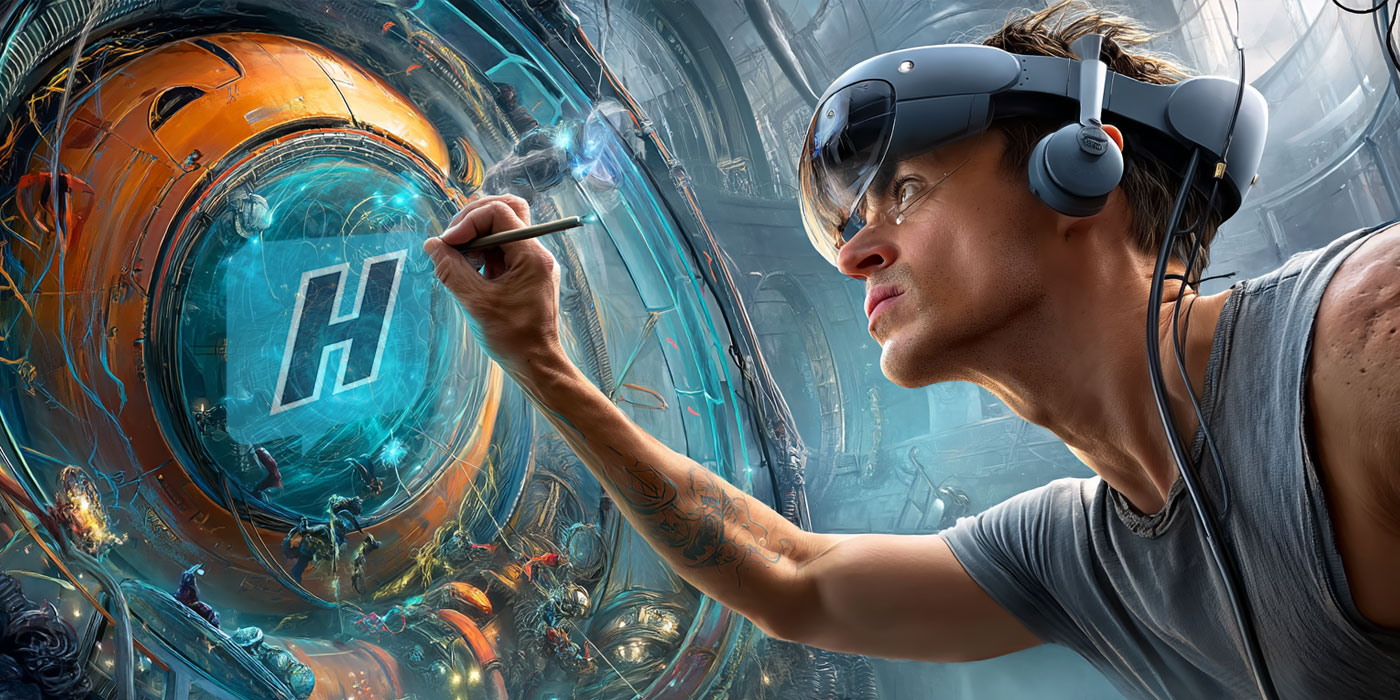Digital Transformation: Reimagining Business Through XR
Digital transformation is no longer about moving to the cloud—it’s about creating smarter, more immersive, and more connected experiences. In this category, we explore how Extended Reality (XR), including AR and VR, is driving the next wave of innovation across industries. From modernizing workflows and training to revolutionizing collaboration and customer engagement, XR is at the heart of how forward-thinking organizations are building for the future—agile, scalable, and immersive.

Rewiring Business for the Immersive Era: XR at the Core of Change.
Digital Transformation: Accelerating Change with XR Technologies
In an era where businesses must continuously innovate to stay competitive, Digital Transformation has become a strategic imperative. The integration of Extended Reality (XR)—which includes Augmented Reality (AR), Virtual Reality (VR), and Mixed Reality (MR)—is at the forefront of this evolution, revolutionizing how organizations engage with customers, streamline operations, and empower their workforce.
As industries across the globe embrace immersive technologies, XR is facilitating a fundamental shift in business processes and consumer interactions. AR headsets, VR simulations, and XR software platforms are no longer just cutting-edge concepts—they’re transforming everyday business practices, making them more efficient, data-driven, and immersive.
This category focuses on the role of XR in Digital Transformation, providing insights into how businesses are adopting these technologies to drive growth, improve customer satisfaction, and create innovative solutions. We’ll explore the latest advancements in XR hardware, key enterprise software solutions, and the real-world use cases that are accelerating the transition to immersive technologies across sectors such as healthcare, finance, manufacturing, and education.
Key Areas of Digital Transformation with XR:
- Revolutionizing Customer Experience
In a highly competitive marketplace, customer experience is paramount. XR is enabling businesses to enhance the way they interact with customers—whether it’s through virtual try-ons, immersive product demos, or interactive marketing campaigns. By integrating AR/VR into their customer engagement strategies, companies can deliver hyper-personalized and unforgettable experiences that foster brand loyalty and drive sales. - Optimizing Internal Operations
XR technologies are helping organizations reimagine their internal operations by enhancing training, collaboration, and real-time decision-making. For instance, VR training programs allow employees to practice complex procedures in safe, simulated environments, while AR enables field technicians to access real-time data and remote assistance, improving service delivery and reducing downtime. - Improving Data Visualization & Decision Making
One of the most transformative aspects of XR is its ability to present complex data in visually engaging, interactive ways. With XR software, businesses can visualize data in 3D environments, allowing decision-makers to gain deeper insights and make more informed choices. This is particularly impactful in industries like finance, healthcare, and manufacturing, where real-time data visualization can lead to improved efficiency and faster problem-solving. - Workforce Empowerment & Remote Collaboration
As remote work becomes the norm, XR technologies are providing new avenues for team collaboration. Virtual workspaces and mixed-reality meetings allow distributed teams to collaborate as though they’re in the same physical space, breaking down the barriers of geographical distance. Additionally, XR-powered tools allow workers to interact with digital models, perform training simulations, or access instructional content hands-free, increasing productivity and knowledge transfer. - Driving Innovation with Industry-Specific Applications
XR is enabling business transformation across virtually every sector. For instance, in healthcare, AR is used for surgical planning and patient care, while VR helps doctors hone their skills through immersive simulations. In manufacturing, AR glasses assist workers with assembly tasks, while VR is used to design prototypes and simulate factory layouts. These applications not only enhance operational efficiency but also foster an environment of continuous innovation.
What You’ll Find in This Category:
- Comprehensive Insights into XR Tools & Technologies
Stay up to date with the latest advancements in XR hardware, including AR/VR headsets, smart glasses, and XR software platforms. Discover which technologies are driving the most significant changes in business operations and customer engagement. - Real-World Use Cases & Success Stories
Learn how companies across various industries are integrating XR to address business challenges, streamline workflows, and create new customer experiences. We’ll highlight successful implementations that showcase tangible business benefits. - Technology Trends & Innovations
Keep track of emerging trends such as 5G, AI, and edge computing, which are enabling faster, more scalable XR solutions. We’ll explore how these technologies are powering the next generation of immersive experiences and pushing the boundaries of what’s possible in digital transformation. - Strategic Guidance for Businesses
Get expert advice on how to plan, implement, and scale XR technologies within your business. Whether you’re just starting your digital transformation journey or looking to expand your XR capabilities, we provide actionable insights to help guide your success.
As XR technologies continue to evolve, they’re not just augmenting existing business processes—they’re driving fundamental changes in the way businesses operate, engage with customers, and deliver value. The future of digital transformation is immersive, and XR is leading the way, offering organizations the tools they need to stay ahead in a rapidly changing world.

